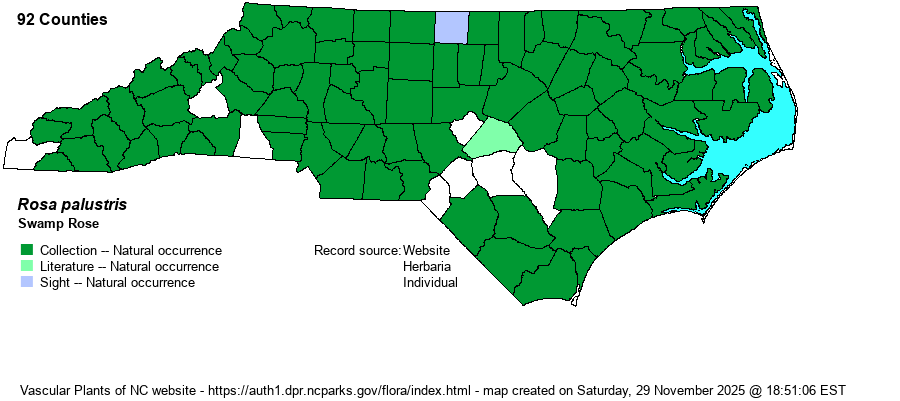| Author | Marshall | |
| Distribution | Essentially statewide, but mysteriously scarce in the Sandhills region. As with the previous species, RAB (1968) failed to look at their own county range maps for the Carolinas in proclaiming “throughout”; they show no records at all for the NC Sandhills and practically none for the SC Piedmont and Mountains.
The species has a large range centered on the eastern U.S., ranging from southern Canada to central FL and barely south to LA.
| |
| Abundance | Generally frequent to common nearly throughout, but surprisingly rare in the Sandhills area. | |
| Habitat | As the common name suggests, this species favors wet areas with standing water or very damp ground; swamps, pools, beaver ponds, bogs, seepages, and other such sites. Obviously, as it is rare in the Sandhills, it is scarce in quite acidic wetlands such as pocosins. | |
| Phenology | Blooms in May to July, rarely later; fruits in September to October. | |
| Identification | This is another very familiar shrub to biologists, especially when in bloom. Unlike the Carolina Rose (R. carolina), this species is a substantial and well-branched shrub reaching 5-6 feet tall. It also contains the 5-9 pinnately arranged, serrated leaflets found in many roses, and also has large pink flowers about 2-2.5 inches across. It is easily identified by its wetland habitats, height, and thick and curved thorns. | |
| Taxonomic Comments | None
| |
| Other Common Name(s) | Essentially none | |
| State Rank | [S5] * | |
| Global Rank | G5 | |
| State Status | | |
| US Status | | |
| USACE-agcp | OBL link |
| USACE-emp | OBL link |

